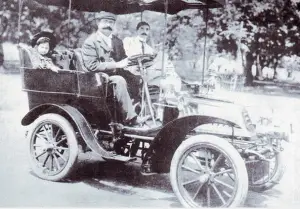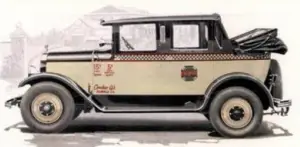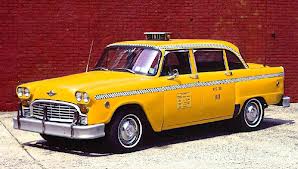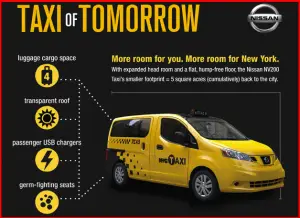Taxicabs are an important part of business, travel and everyday life in most countries. The taxi industry within the United States has relied much on the advancement of taxis on the streets of New York City, an influential and large aspect of culture in the US. Therefore, as the history of the taxi cab industry is explored, the NYC taxi industry is always nearby.
Although the taxi industry can be traced back to 1640, when horse drawn vehicles were available for hire in Pars, the industry did not truly begin in the United States until the late 1800s. By 1890, automobiles gained popularity and were becoming more prevalent on city streets around the country. It comes as no surprise that soon enough, business opportunists were hiring automobiles out and creating competition for the horse-drawn carriages. These initial cabs were battery powered, with batteries that weighed up to eight hundred pounds. Even with these excessively heavy batteries, the popularity grew rapidly and soon enough, by 1899 there were approximately one hundred cabs on the streets of NYC.
As taxi popularity grew, the city of New York decided to purchase six hundred red and green paneled, gasoline powered cars from France to inhabit the city. With the introduction of the taxi meter to provide some commonality for charges, the taxi industry began to flourish. By the mid-1910s, there were countless independently owned taxi fleets and several large fleets developing.
By the 1920s, the opportunities of the taxi industry had been recognized by industrialists nationwide, and of course, it was most capitalized in New York City. Major automobile companies like General Motors and Ford manufactured and owned some of the largest fleets of taxi cabs. However, as we all know today, one of the most successful and recognizable companies emerged during this time period: the Checker Cab Company, with its iconic large yellow and black taxis. As Checker and similar competitors continued to flourish, regulations and control measures were needed to protect both cabbies and consumers. As the number of cabs in cities grew during the depression, so did the amount of corruption.
The tension peaked when over two thousand taxi drivers took a stand, in a strike that took over Times Square in New York City. This was the largest strike in the city’s history when it occurred in 1934. In 1937, to combat the unhappiness of the taxi drivers, the mayor of New York City initiated the medallion system that is still used to this day. This system involved the purchase of a small plate that would be attached to the hood of a taxi, the plate itself certified the taxi for passenger pickup throughout the city. This system allowed government officials to moderate the quality and quantity of taxis, while giving drivers more power and a chance to make decent wages.
The medallion system was proven successful as the taxi industry stabilized and remained a vital part of urban transportation. New York City continued to improve taxi conditions and consumer protection through the order of the standardized yellow taxi in the 1960s. This effort helped to distinguish unlicensed cabs and private livery services from true, medallion cabs. These efforts continued into the 70s and 80s as crime against taxi drivers grew; a bulletproof partition between the front and back seats became more and more common.
The late 1980s and 1990s brought several key changes to the taxi industry. As the immigration patterns changed within the US, so did the nationality of taxi drivers. The government stepped in and took a stronger hand in regulating the industry all together and the conduct of drivers. Restrictions on radio and phone usage went into effect even with great protest from drivers.
Today, the taxi industry remains critical to transportation around urban areas, especially New York City, where the yellow taxi acts as a global representation of NYC. Taxis are integral to countless television shows, movies, ad campaigns and news stories: the taxi industry is deeply engrained in our society. As technology advances, so do the designs and features of taxis; there are televisions, credit card payment systems and interactive maps for passengers. Taxis are truly representative of our culture and society: wherever you need a go, a taxi can almost always get you there!
For more Information, check out these great sources: PBS Taxi History & NY Times: Taxis Through the Years






